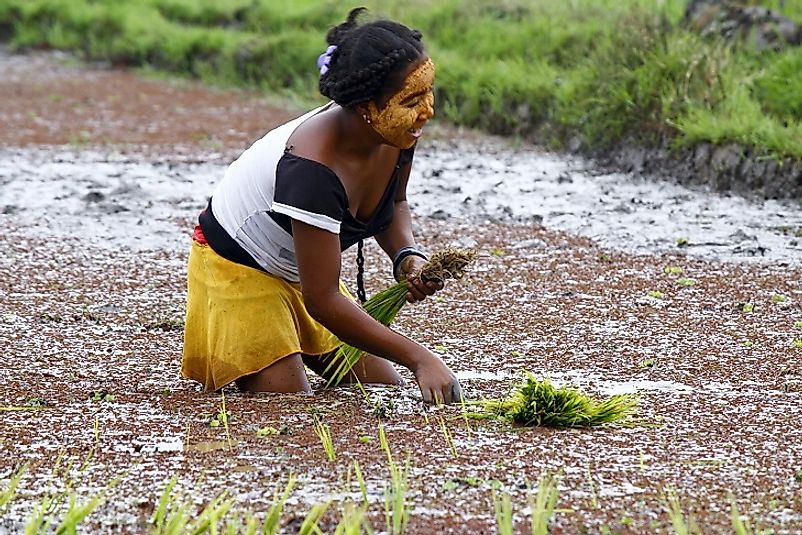Countries Where Women Are Most Active In The Labor Force

In Tanzania, 90% of the female population is composed of women in the work force. In such other Sub-Saharan African countries as Madagascar, Rwanda, Mozambique, Zimbabwe, Burundi, Malawi and Eritrea, women in the work force make up more than 80% of the female population.
Women in the Informal Sector
The Sub-Saharan African regions are also the places where employment opportunities are mostly available in the informal sector, largely made up of women and youth being employed. The agricultural sector, provides most of the jobs in this region. For example, in Tanzania, agriculture accounts for 80% of the jobs. This main stay of the people is now being threatened by the subsidies given in the northern countries to farmers. These are mostly small holdings. However, work in the agricultural sector is further also divided according to gender. The women are involved in growing, processing and selling domestic food crops, while men are engaged in producing cash crops meant for export.
Less than 25% of women are employed in non-agricultural work, and rank among the three regions that show this trend. Women are usually engaged in self-employment in the informal sector, as single operators or heads of family businesses, however also sometimes engaging in unpaid family work. Informal retail sales provides most jobs here, with street trade employing many women. Labor intensive industries such as the textile and garment industries are other places where women are likely to be employed.
Socioeconomic Drivers of Female Employment
The main reason for the concentration of jobs in the informal sector is lack of industrialization, so few jobs are available in the organized sector. Only labor intensive industries including garment making are widely present in some countries such as Madagascar. In Tanzania and Zimbabwe, existing textiles industries are on the decline due to international competition taking jobs away from these countries. Moreover export production is governed by tariff barriers as well as stricter employment and benefit rules. Employers circumvent employment clauses by employing most of their work force through contracts, and part-time labor. Import of cheap subsidized products undermine local production, by decreasing demand for domestic products.
Lack of Formal Sector Jobs
The formal sector in this region is composed mainly of ‘non-indigenous’ or whites and rich multinationals with better access to the local and international market. The divide between the ‘non-indigenous’ and the poor informal sector exists since colonial times, with little interaction occurring between the two groups. A lack of strong institutions and governments to regulate and protect the poor robs the region of proper conditions for change.
Impacts of Current Employment Patterns In The Region
The informal sector is plagued by poor wages and insecure job opportunities. Women are also paid less than men for the same work, and are usually employed in jobs that are less remunerative. The countries in Sub-Saharan Africa are growing, with migration increasing to cities. However the urban poor are not being included in their growth-plans. Their current precarious street trade is further threatened by government initiated evictions in a bid to 'modernize' the cities.
Growing Labor Forces
By 2035, it is estimated that the work force in Sub-Saharan Africa will be greater than the rest of the world. This is happening given its high fertility rate, and decrease in infant mortality due to improving access to health care. However, the region is poorly equipped to take advantage of this growing force, has its formal sector does not have enough jobs to offer. Given enough jobs, the per capita income could easily rise by 25%. However, this opportunity would turn into a problem if the issue of employment generation is not addressed immediately.
Countries Where Women Are Most Active In The Labor Force
| Rank | Country | Percent of Females in Workforce |
|---|---|---|
| 1 | Tanzania | 90 % |
| 2 | Madagascar | 88 % |
| 3 | Rwanda | 88 % |
| 4 | Mozambique | 86 % |
| 5 | Zimbabwe | 85 % |
| 6 | Burundi | 85 % |
| 7 | Malawi | 84 % |
| 8 | Nepal | 83 % |
| 9 | Eriterea | 82 % |
| 10 | Iceland | 82 % |











